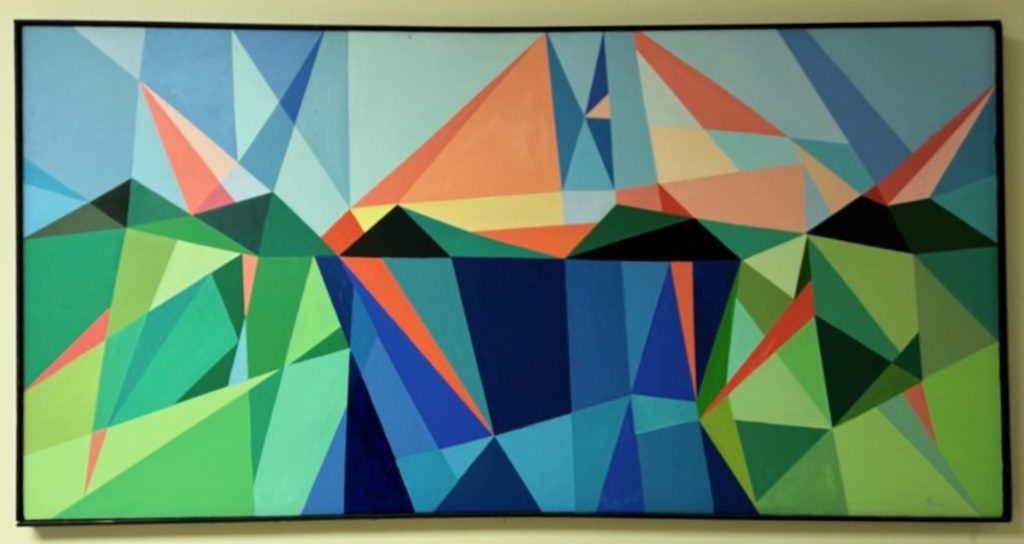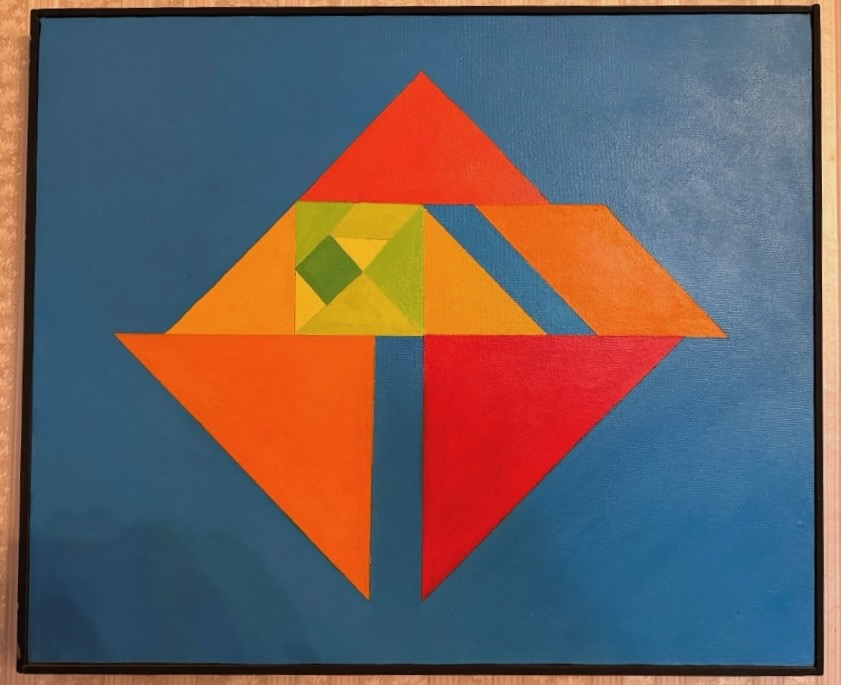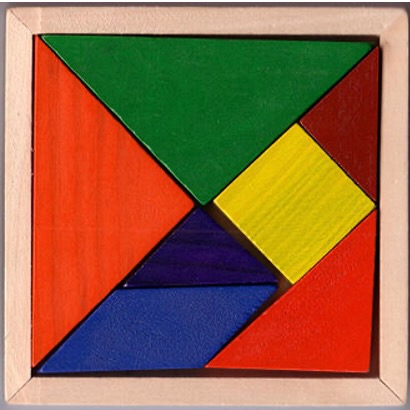Margaret Gelbach Foster (1921-2002) Geometric Abstraction Works


Margaret Gelbach Foster (1921-2002), acrylic, both untitled. Two of many works that she painted in the style known as Geometric Abstraction. The top painting is in the substyle known as Hard-Edge Painting, which emerged in the 1950s and 60s, especially as a response to Abstract Expressionism. Below it is an example of a substyle unofficially known as Tangram-like puzzle abstraction, after the traditional Chinese dissection puzzle of seven flat shapes forming various figures. (Be sure to count the shapes.)
The seven wooden tangram puzzle pieces stored in the customary square:

Marge, as she was known to her friends, was an active member of the First Unitarian Society of Albany for almost 40 years. Her art training included both a B.S. and an M.S. from the University of Wisconsin, study at the Fine Arts Center in Colorado Springs, and a Carnegie Foundation grant for study in London.
Her paintings, while stylistically quite varied, are solidly grounded in the art movements of the 20th century. Many of her paintings and drawings are of places she lived or traveled, including Chicago, IL, Colorado, Lexington, KY, Albany, NY, and Europe, China, and Russia.
She taught art for twenty years, first at Monticello College, Alton, IL, then as an Assistant Professor at Transylvania University, Lexington, KY, then as Associate Professor of Art at Maria College in Albany.
Her paintings have been in many regional and national exhibitions, and reside in the permanent collections of SUNY Albany, New York State and the renowned Seagram Art Collection before that collection was auctioned off in the early 2000s.
